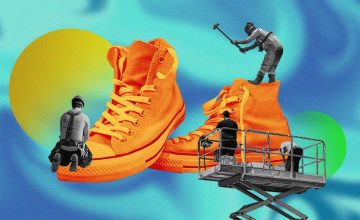February 6, the STOP & GO Transport Coalition and PATOK (Pagkakaisa ng mga Tri-wheel Organizations para sa Kabuhayan ), with the support of PISTON Partylist. stopped operations as a sign of protest against the incoming phaseout of jeepneys, which is coming into fruition this year.
February 27, another strike is happening but will include coalitions and transport groups as far as Cebu, Iloilo, and Bacolod. Jeeps everywhere will not run today.
That’s trouble for us commuters. Three people I know took an Uber or Grab instead of commuting. We all take the jeep to work, and with the jeep gone even for a day, how can we literally move on?
But I got to thinking: what does a transport strike do but cause delays to the hundreds of thousands of daily jeepney riders? Not much on the day of the transport strike itself. Not much on the day after either. But how about we stop thinking in terms of the day-to-day and start to ponder about the long run. How big of a deal is a complete phaseout of the jeepney?
Jeepneys are a Philippine icon, a phenomenon in itself worthy of research, and the king kaskasero of the road, rivaled only by buses. Jeepneys are smoke-belchers and swaybacked violators of road etiquette. Most jeepneys have been on the road for more than a decade, and it shows each time you ride one. For the current price of eight Philippine pesos, you get a convenient ride to various roads in the metro, four kilometers or less each time.
The phaseout calls for modernization, and one of the biggest gripes we have is the pollution they create. And it’s true. Have you ever tried to ride a jeepney, find out it’s already full a moment too late, and get blasted with pitch black soot straight out the tambutso right to your face? The smoke even lingers for a few seconds.
And yup, Jeepney drivers can be dickheads on the road. Lots of viral videos of road rage and road accidents are testaments to that.
But we also forget that they are small businesses in themselves. Many drivers take to the road with these four-wheeled monsters with the usual setup of a two drivers to one jeep plus the operator. The more passengers they get, the more money they earn. So can we really blame jeepney drivers for being road devils?
As for the smoke, here’s a question: how many penalties do we have to give for the jeepney drivers to learn their lesson? The short answer is none, because penalties don’t give jeepneys new technology to reduce emissions. Since jeepney drivers don’t have the cash to turn the jeep into a zero-smoke vehicle, they get the same penalties over and over, which leads to resorting to bribes just to get by.
And if this were a business, which it is, even the commuters themselves have a stake in this phaseout. We all can’t take an Uber everywhere (skrt skrt), everyday. E-jeeps? No smoke, yeah, but not everyone can afford thrice of what a regular jeepney would cost. How will the price hike affect cost of living? A lot. A lot of people take jeepneys, which means a lot of people will have to shell out extra each time they ride one.
Not to mention that E-jeeps are most likely more expensive to acquire than a regular jeep. Can these small-time business owners afford a shiny new e-jeep? Replacing jeeps with e-jeeps would be in the favor of big businesses who can afford the dough. Imagine all those jeeps belonging to one business. That’s too much power, man.
The jeepney was born out of a need to move from place to place faster. The same goes with the pedicabs and the tricycles. When we replace these modes of transport with modern counterparts, is it really still modernization when it doesn’t reach all stakeholders? In other words, is phasing out the jeep progress when a lot of people will be left out? I doubt. PISTON estimates more than 650,000 jeepney drivers and more than a 250,000 small-time operators will be out of a job if the phaseout will take place. And the masses who commute: will it become a daily choice between a meal or a ride? I don’t know, but it’s possible.
So where did all the jeepneys go today? Some were still set on their regular routines, but a significant chunk stayed at home because their drivers and operators took a stand for their livelihood. Let all those thoughts soak in before you cry foul on why you were late to work because there were no jeepney in sight. The transport strike may have only taken just one day, but for the next day, and the days after, it’s all about raising awareness.
Image by Aaron Silao

























Comments